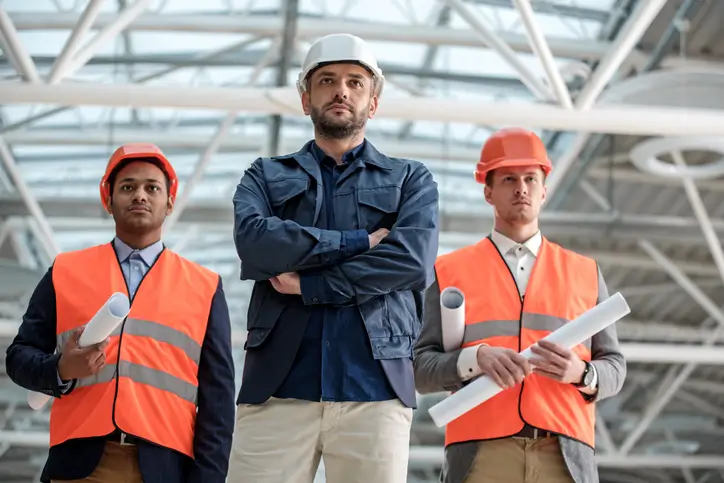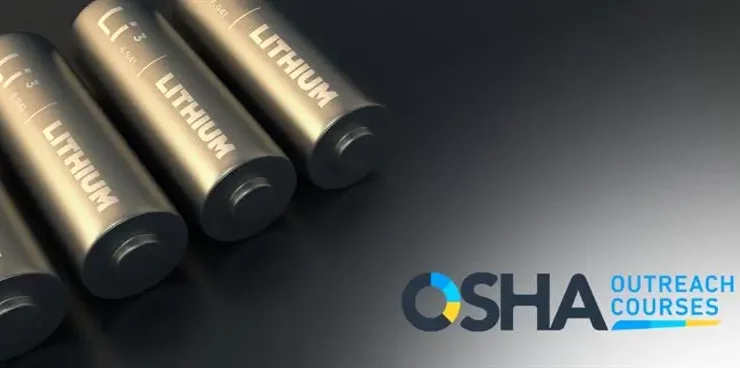Preventing Struck-By & Caught-Between Incidents
Workplace safety has evolved considerably over the decades; yet, struck-by and caught-between incidents remain stubbornly persistent hazards across various industries. On a construction site or in a factory assembly line, these types of injuries account for a significant percentage of serious accidents and tragically, fatalities too.
Understanding how to prevent these incidents is not only a regulatory necessity, but also a moral and operational imperative.
Let’s take a closer look at what these hazards entail, why they happen, and how you can effectively reduce the risks.
Understanding Struck-By and Caught-Between Hazards
Struck-by incidents occur when a worker is hit by a moving object, such as swinging equipment, falling tools, or even flying debris. These events can range from minor injuries to catastrophic consequences, depending mainly on the force and nature of the impact.
On the other hand, caught-between incidents happen when a worker is squeezed, crushed, or compressed between two or more objects. This might involve getting pinned between heavy machinery, trapped between a wall and moving vehicle, or caught in a collapsing structure.
Both categories are part of OSHA’s “Fatal Four” construction hazards, underscoring their deadly seriousness.
Common Causes of Struck-By and Caught-Between Incidents
Understanding the root causes is the first step towards prevention. Some common factors include:
- Poor visibility or blind spots
- Unsecured loads
- Improper use or maintenance of equipment
- Inadequate training and communication
- Lack of protective barriers
- Distractions or complacency on the worksite
- Improper lockout/tagout procedures
Each cause points back to a breakdown in workplace systems, whether it is a missing safeguard, a lack of awareness, or rushed operations.
Practical Strategies to Prevent Struck-By Incidents
Here are a few of the strategies that can work.
Implement Clear Traffic Management Plans
Heavy equipment and vehicle movement are among the top contributors to struck-by incidents. To counter this, establish detailed traffic management plans that control the flow of vehicles and pedestrians. Use barriers, designated walkways, and clear signage to separate the two as much as possible.
Spotters should also assist drivers when navigating tight spaces, particularly in areas with limited visibility.
Secure Loads Properly
Before moving any material or equipment, ensure loads are secured. Tools, materials, and debris should not be left loose at height or transported without proper fastenings. A simple oversight can lead to objects falling onto unsuspecting workers below.
Additionally, never walk or work under suspended loads.
Use Personal Protective Equipment (PPE)
Helmets, face shields, and eye protection are the last line of defense when other controls fail. While PPE doesn’t prevent incidents from occurring, it can significantly reduce the severity of injuries. Make sure that PPE fits correctly and is inspected regularly.
Regular Equipment Inspections
Faulty equipment is often a silent yet hazardous threat. Establish a routine maintenance and inspection program to promptly identify issues. From crane cables to nail guns, every piece of equipment should be checked for safe operation before use.
Practical Strategies to Prevent Caught-Between Incidents
Maintain Safe Working Distances
Workers should be trained to maintain a safe distance from heavy equipment and moving machinery. Operators should never reverse vehicles or rotate machinery without ensuring the area is clear.
Having defined exclusion zones around machinery can prevent workers from getting caught between machines and structures.
Train Workers on Lockout/Tagout Procedures
Lockout/tagout (LOTO) procedures ensure that machines are properly shut off and cannot be restarted before the completion of maintenance or repair work. Without LOTO protocols, a machine could unexpectedly start and trap a worker.
Every employee must be trained to recognize when lockout/tagout procedures apply and how to perform them correctly.
Install Machine Guards
Mechanical parts, such as gears, rollers, and pulleys, can grab loose clothing or limbs in an instant. Fixed or adjustable machine guards must be installed and kept in place at all times during machine operation.
Educate workers about the dangers of bypassing or removing these safety devices, even for just a second.
Reinforce Trench and Excavation Safety
Construction sites often involve trenches and excavations, which are high-risk zones for caught-between accidents. Cave-ins can happen without warning. Always ensure that protective systems, such as trench boxes, shoring, or sloping, are in place before workers enter these areas.
Never allow heavy equipment to operate too close to the edge of a trench, as the added weight can trigger a collapse.
The Importance of Culture and Communication
Prevention doesn’t end with physical controls. A strong safety culture, where workers feel empowered to speak up about hazards, is critical.
- Safety Meetings and Toolbox Talks: Regular discussions keep safety at the forefront. Focus on real-world examples and actionable tips.
- Incident Reporting: Near misses and minor incidents should be reported and analyzed. They are often precursors to more serious accidents.
- Management Commitment: Leadership must visibly support safety initiatives, not just in words but through budgets, policies, and actions.
When safety becomes a shared responsibility rather than a checklist item, workers naturally stay more vigilant.
Emerging Technologies Making a Difference
Technology is playing a growing role in hazard prevention:
- Wearable devices can alert workers when they are too close to heavy machinery.
- Drones allow for safer inspections of high-risk areas.
- Automated shutoff systems can detect when a person is in a dangerous proximity to equipment and power down the machinery.
While technology should not replace traditional safety measures, it offers an additional layer of protection that can be life-saving.
Final Thoughts
Preventing struck-by and caught-between incidents demands a balanced approach. It’s about layering controls engineering, administrative, and PPE.
By being proactive, staying vigilant, and making smart investments in training and equipment, workplaces can drastically reduce the risk of these deadly events.
Remember: every injury prevented is a life protected, a family spared grief, and a workplace made stronger.




